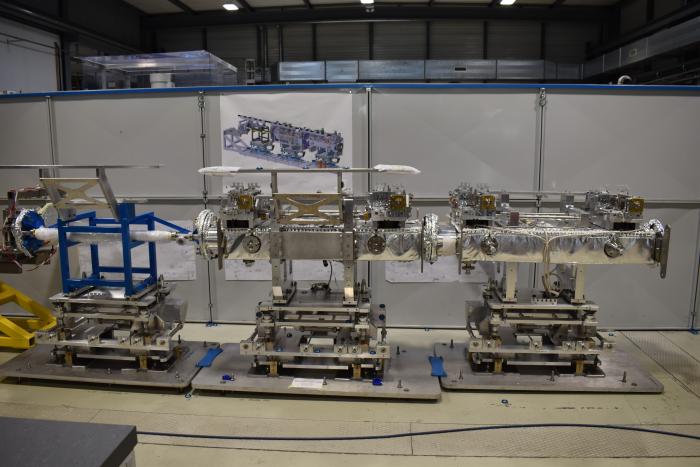The WP5.2 achieved a new important milestone last August, with the closing of the two HL-LHC collimators’ prototypes vessels and their installation on the surface mock-up stand in building 927. This achievement has been possible thanks to the commitment of all WP5.2 team members, gathering CERN collaborators from several groups (SY-STI, EN-MME, SY-BI, BE-CEM, TE-VSC, BE-ABP, BE-GM, EN-HE).
The two HL-LHC collimators’ prototypes, called TCLPX and TCTPXH, have a new jaw design, new vacuum flanges, a larger vessel integrating an RF screen for the circulating beam and bigger jaw strokes. These changes are required to cope with the challenges of the new HL-LHC layouts in IR1/5. The collimator design is compact and integrates new vacuum connection tools allowing to connect their large and heavy flanges to the adjacent collimator, and reducing dose for operators in case of collimator replacement. Their support design integrate the new jigs and joints, as well as the wire positioning systems, allowing remote alignment (developed by WP 15.4). The latter has been tested in July, and its stability is excellent. The production of these prototypes allowed to efficiently validate their design, from the functional, production and operational point of views. Several optimisations have been already implemented in the 3D and 2D CAD models of these two collimators. The production of these prototypes is also a great example of CERN’s capability to produce complete and operational machine components.
The collimators’ prototypes are now being UHV tested at building 113, where the cleanliness will be assessed. They will them come back to Building 927 for further tests.
A huge effort has been provided by the team members all over 2022 and 2023, allowing to converge on the detailed design, refine the production procedures, make strategic choices about materials and collimator components, and finally converge on a robust set of 2D drawings. WP5.2 team members are now working full steam on series procurement activities, including the management of several Market Surveys and Invitation to Tenders, in view of getting at CERN, for LS3, 36 new collimator units, from five different types, as well as 15 passive masks, to be installed at Points 1, 5 and 7.
By Federico Carra, François-Xavier Nuiry and Stefano Redaelli

